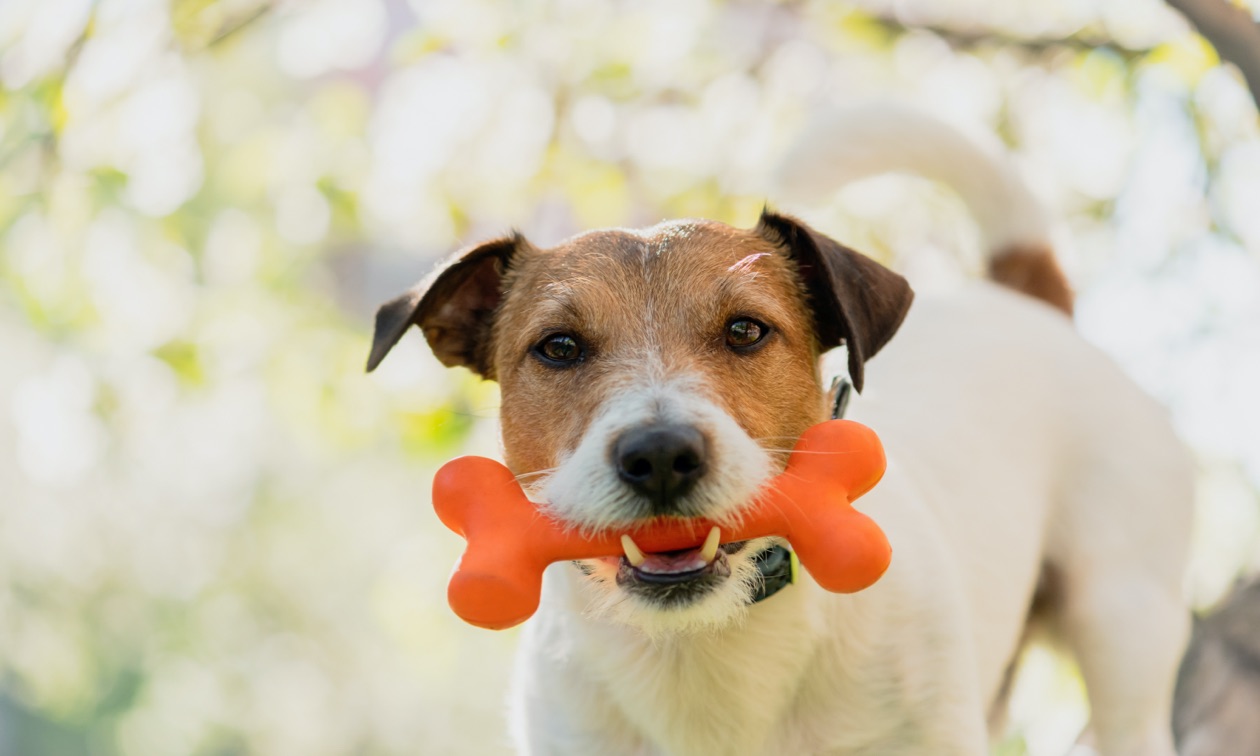All pet owners know that dogs love to chew. Not only is it a pleasurable activity, but there are benefits to chewing (it alleviates boredom, can be a coping mechanism for anxiety and stress, and helps keep their teeth clean).
The truth is, it’s what your dog chews on that’s important. In movies, on TV, and in books, dogs are often depicted as chewing on bones. But the reality is that bones can present health and safety issues for your dog.

Can Dogs Chew Bones?
The short answer is yes, but the better question is, should they? Chewing bones isn't really a good option for dogs and can cause harm.
Both cooked and raw bones can be detrimental to dogs. It doesn't matter how the bone is presented — they can potentially splinter. These splinters can cause irritation and/or trauma to your dog's mouth and gastrointestinal tract. Here are some of the things that can happen to your dog from chewing or eating on bones:
- Lacerations or punctures to the gums and tongue
- Cuts and wounds to the throat
- Choking
- Vomiting
- Diarrhea
- Severe constipation
- Intestinal blockage
- Perforation of the intestines
- Rectal trauma and bleeding
Which Bones Are Not Safe for Dogs?
Cooked Chicken and Turkey Bones
These bones splinter more than others (and into smaller, sharper pieces). The fact that they are small makes them easier to get lodged in the throat and esophagus. The other unfortunate thing is that radiographs are often a poor diagnostic tool to see these small bones. This means diagnosing these bones lodged somewhere in your dog’s system can require a CT scan, sedation for your dog, and extra expenses for your household.
T-Bones
Due to their shape, T-bones can become trapped in a dog's throat while the other portion is down the esophagus or trachea. This can lead to severe swelling that can block the airway, preventing your dog from breathing.
Raw Bones
While many pet owners feel raw bones are safer because they are softer, they pose their own hazards. For example, raw pork bones easily break and splinter. Due to their small size, rib bones can easily get stuck in your dog's throat or esophagus. Additionally, even if the bone is softer, swallowing small bones is still a choking hazard. When too many are consumed, they can cause intestinal blockage.
Additionally, they can spread food-borne illnesses, such as Salmonella, Listeria, and E. coli. Even if your dog does not get sick, these organisms can be life-threatening to immunocompromised people, children, and seniors.
Small Bones
Giving any bone that is smaller than your dog's mouth or that easily splinters are unsafe options. Both can result in choking hazards as well as trauma to the mouth and intestinal tract.
Circular Bones
Circular bones are also poor options because they can get stuck on your dog's lower jaw behind the canine teeth. Unfortunately, this is very scary to dogs, and it generally requires sedation to have the bone cut to free the dog’s jaw.
What Are Safe Bones for Dogs?
If you decide to give your dog a bone, you ideally want a bone that meets the following criteria:
- Raw bone from a reputable butcher.
- Large enough to be easily grasped and about the size of your dog's head.
- One that is round with bulges or lumps on both ends.
All dogs should be monitored the entire time they are chewing on the bone, and if any damage occurs to the bone, it should be taken away promptly. To protect against Salmonella and other bacterial growth, such as Listeria and E. coli, the bone should be refrigerated before use and thrown away after a few hours.
Remember, even though raw bones may be considered a 'safe' bone option, there are still risks. Your dog can still break a tooth, cut their gums, and even get a splinter of bone that can cause stomach or intestinal trauma or blockage. Additionally, chewing on the bone too much can result in constipation.
Instead of treating your dog with a bone, opt for a safe chew toy instead, like firm rubber toys, rope toys, durable stuffed toys, or tennis balls, based on your dog’s chewing style and habits.
Are Bones Bad for Dog's Teeth?
Veterinary dentists advise against pet owners using bones for dogs. They recommend using chews with the seal of approval from the Veterinary Oral Health Council (VOHC). All products with this seal have been evaluated to be beneficial to a dog's oral health.
Providing your dog with a bone is a personal choice, but as a pet owner, you must take proper bone safety precautions to protect your dog from trauma to their mouth and gastrointestinal tract, and to reduce the risk of food-borne illness to your dog and your family.
ZPC-01449R1



